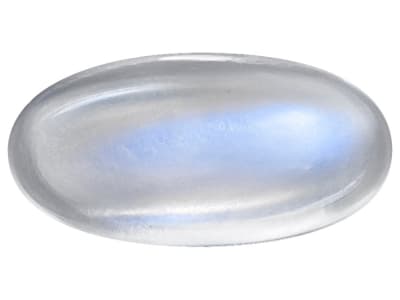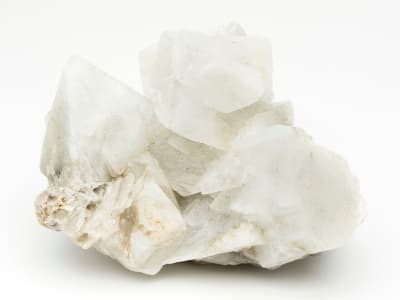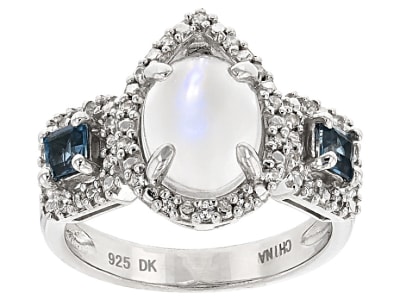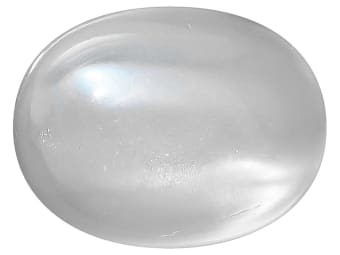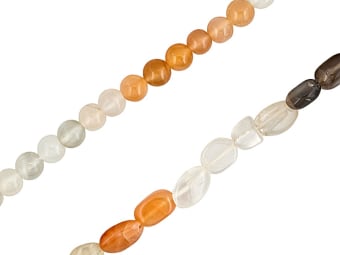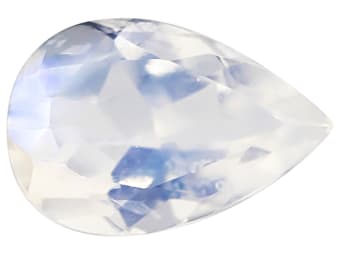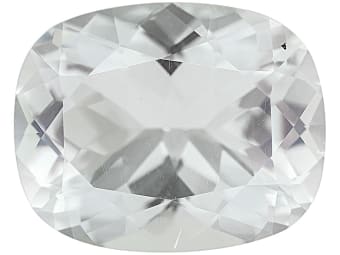Moonstone is the phenomenal variety of feldspar that shows adularescence, a soft billowy sheen that rolls over the surface of the stone. Adularescence is an interference effect caused by alternating internal layers of albite and orthoclase feldspar. When the phenomena displays a blue sheen in fine colorless labradorite feldspar it is called “rainbow moonstone”. The adularescent orthoclase feldspar from the Adular Mountains of Switzerland is called adularia.
General Information
LWUV: inert to weak yellowish white, blue, moderate chalky blue, pink or red
Moonstone Colors
-
 Black
Black -
 Brown
Brown -
 Brown
Brown -
 Gray
Gray -
 Multi-color
Multi-color -
 Orange
Orange -
 Orange
Orange -
 Pink
Pink -
 Red
Red -
 White
White -
 Yellow
Yellow
Alternate Names
Rainbow Moonstone, Star Moonstone
Countries of Origin
Tanzania, United Republic Of; Myanmar; Russian Federation; Sri Lanka; United States of America; Madagascar; Switzerland; French Polynesia; India; Mozambique; Unknown; Malawi; China; Brazil
Care
Normal care
Species/Variety
Blue Moonstone
Blue moonstone is the finest variety of labradorite moonstone. It is highly transparent and displays strong blue adularescence. The best specimens originally came from Myanmar (formally known as Burma), but it can also come from India, Madagascar, Malawi, Sri Lanka and Tanzania.
Moonstone-Labradorite
Labradorite moonstone is a variety of feldspar that displays an amazing optical phenomenon called adularescence. Labradorite is a plagioclase feldspar and a member of the triclinic crystal system. Internally repeating feldspar layers scatter the light that enters the stone creating a mystical glow reminiscent of moonbeams. This glow comes to life, rolling across the gems surface, when it is moved. Labradorite moonstone comes in colorless, white, slight orange or green with a blue sheen. Adularescent labradorite with a multi-colored glow is sometimes called Rainbow Moonstone.
Moonstone-Orthoclase
Orthoclase moonstone is a variety of feldspar that displays an amazing optical phenomenon called adularescence. Orthoclase feldspar is a member of the monoclinic crystal system. Internally repeating feldspar layers scatter the light that enters the stone creating a mystical white glow reminiscent of moonbeams. This glow comes to life, rolling across the gems surface, when it is moved. It can be colorless to white, orange, yellow or brown.
Rainbow Moonstone
Adularescent labradorite with a multi-colored glow is sometimes called rainbow moonstone. Rainbow moonstone is colorless and highly transparent and it displays an amazing optical phenomenon called adularescence. Labradorite is a plagioclase feldspar and a member of the triclinic crystal system. Internally repeating feldspar layers scatter the light that enters the stone creating a mystical glow reminiscent of moonbeams. This glow comes to life, rolling across the gems surface, when it is moved.
Adularia
Adularia is a variety of feldspar found in hydrothermal veins in mountainous areas, from one of which it derives its name: the Adular Mountains of Switzerland. It commonly forms colorless to white, cream, pale yellow to pink, or reddish-brown, glassy, prismatic, twinned crystals. These transparent to colorless gems often display a white to blue sheen.
